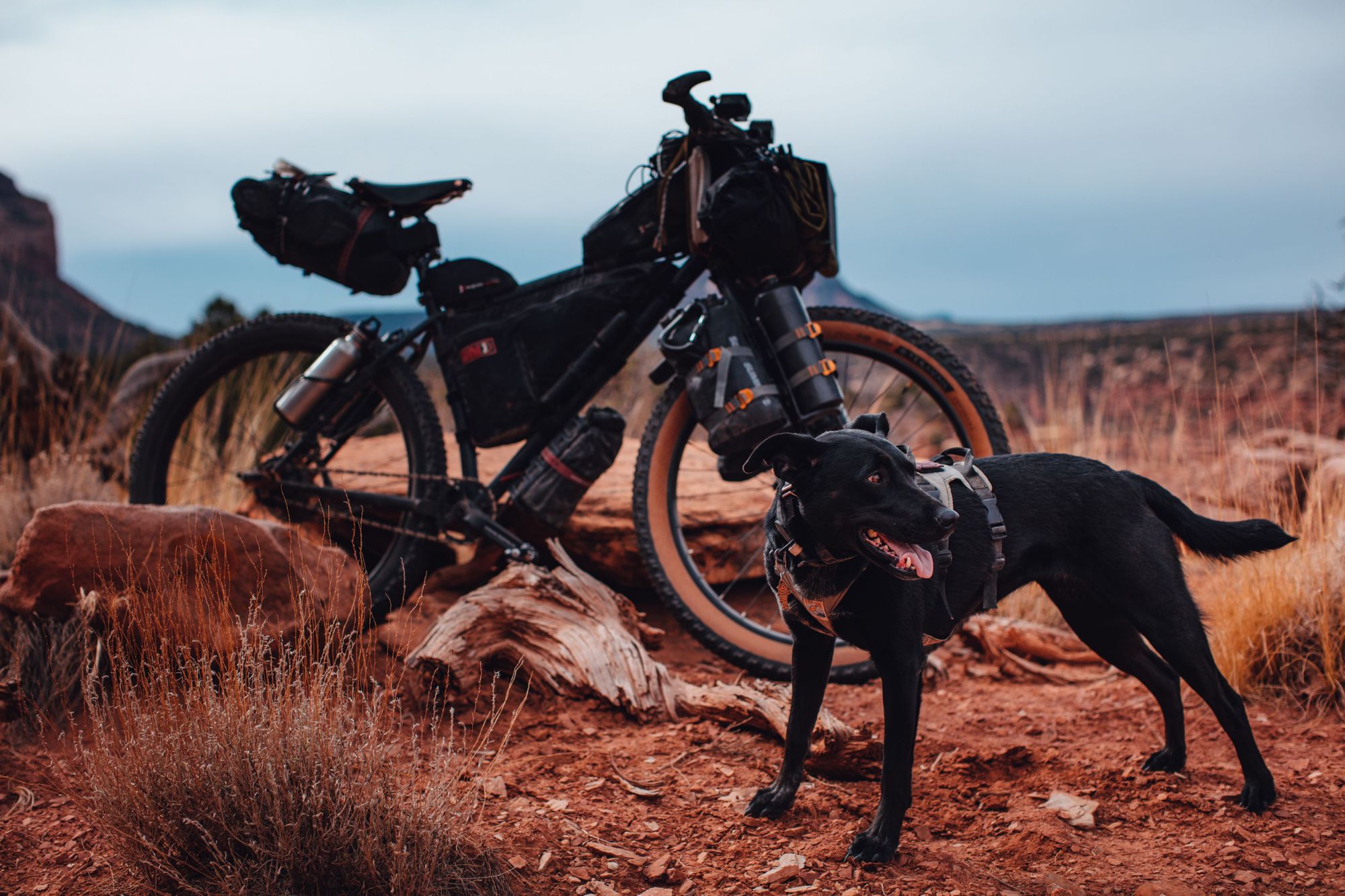Bikepacking is booming and we’re all here for it. Old time cyclists will tell you that bikepacking - the process of heading off somewhere on a bike with a tent or bivvy bag and spending the night, completely self-sufficient - is just another example of a ‘new’ industry trend that has really existed for generations. But the rise of that term ‘bikepacking’ has brought with it a modern movement, which is great, because that's increased demand for kit, meaning that it’s now easier than ever to get lightweight, purpose-built bikepacking gear.
If you’re just getting started though, going on your first bikepacking trip or cycling adventure can seem daunting. What are the best bikepacking bikes? What's all this gear you need to go bikepacking? How will you carry it all?
It’s easy to set yourself off on a scary little thought process that could put you off the whole thing before you’ve even started. At its heart though, bikepacking is all about minimalism and simplicity. Here’s our guide to getting started.
What bikepacking equipment do I need to take my first journey?
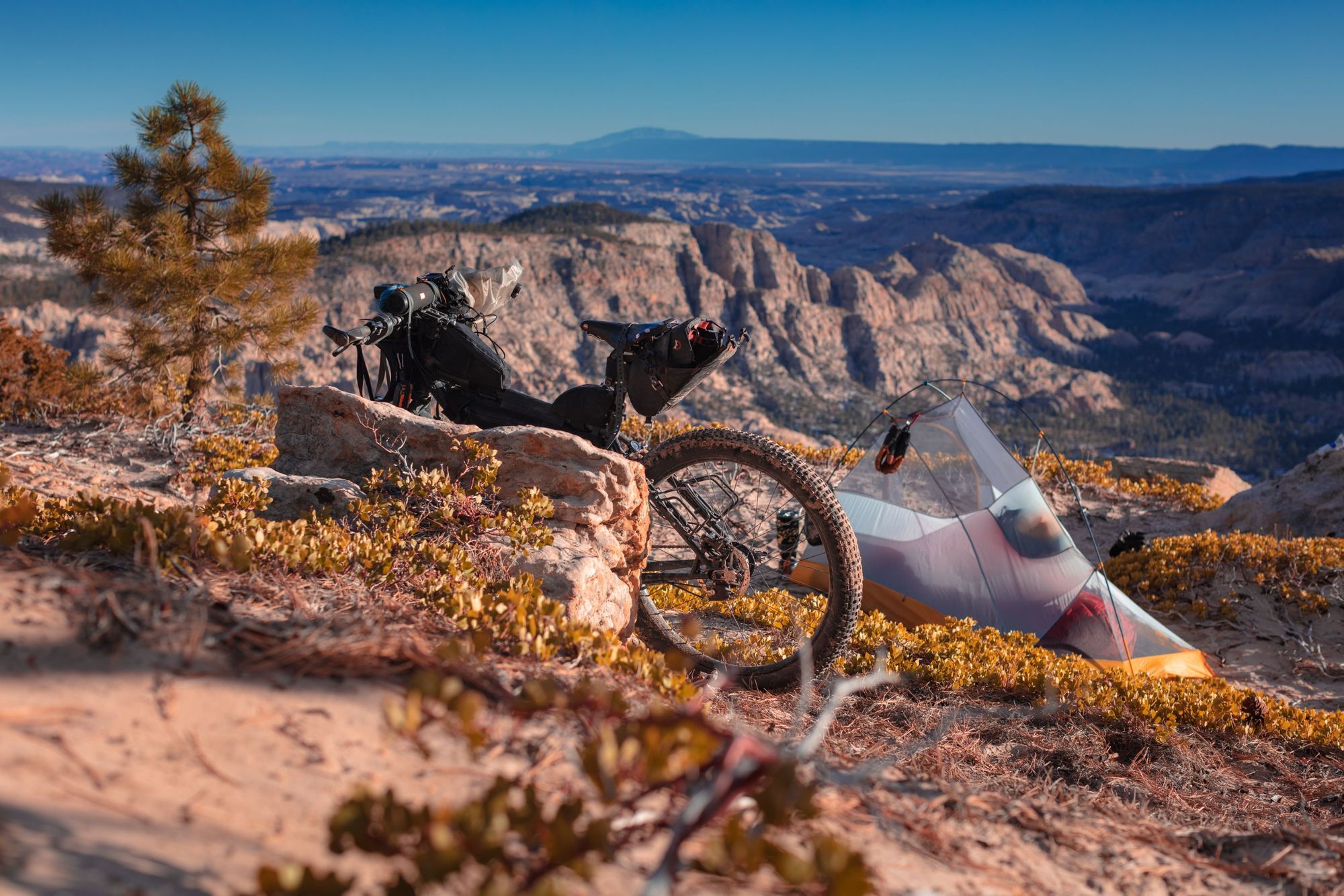
In this section, we’re going to list what we see as the essentials for any bikepacking trip, and then afterwards we’ll look at some bikepacking essentials, like bikes, tents and sleeping bags, in a little more detail. So, what constitutes essential bikepacking gear? What do you need to get started? Here’s a little checklist. Remember, the more you bring, the heavier your carry load!
- A bike (a true ‘essential’ for any bikepacking trip, we're sure you'll agree)
- Lightweight bikepacking bags: saddle bag, handlebar bag, frame bag and possibly an easily-accessible additional accessory pocket
- Appropriate layered cycling clothing, including a helmet
- Dry change of clothing and waterproofs if appropriate
- A tent or bivvy bag, plus sleeping bag
- Camping mat
- Pan, stove, spork and gas, plus something to cook!
- Bike puncture kit (pump, tyre levers and repair kits or spare inner tubes)
- Headtorch and appropriate bike lights
- Map and compass, and optional GPS guiding
- Portable charger (if you want to keep your phone loaded!)
So I’ll need a ride. What are the best bikepacking bikes?
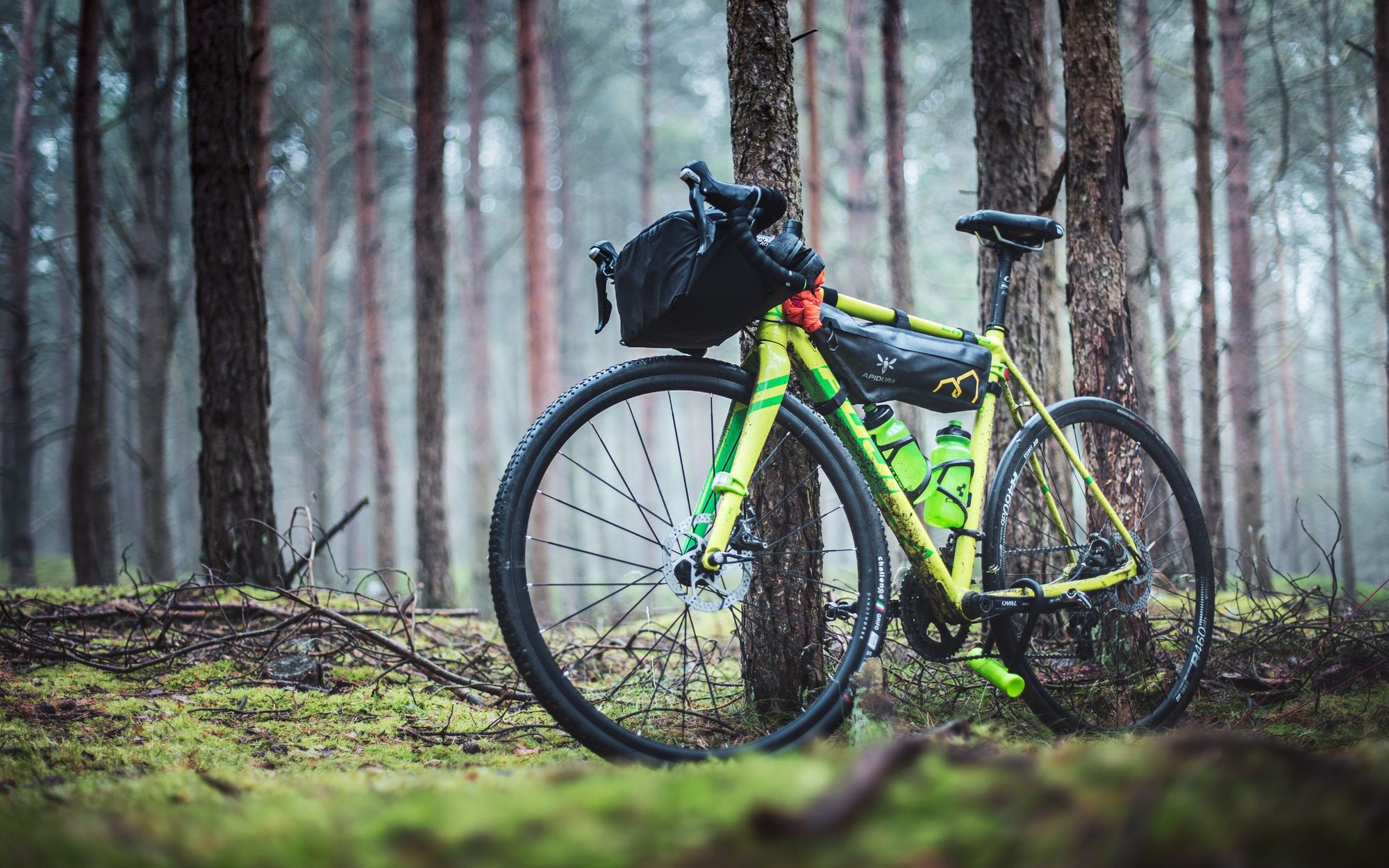
To be perfectly honest, a bikepacking bike can be any bike. Or… almost any bike, at least. It totally depends on the sort of terrain you’ll be riding. Typically, bikepacking is done off-road, on trails or gravel, which means that you’ll ideally want the capability to run wider tyres. If you’ll be riding in a lot of mud, you’ll want those tyres to have a knobbly tread pattern to provide grip, too.
Suspension is very much optional, but often on a full-suspension bike, the rear shock can actually get in the way of a frame bag. Due to this, and due to weight preferences and frequented terrain, a lot of bikepackers ride a rigid frame bike with wider tyres. Of course, you can go bikepacking on the road too, and if you do this, then any road bike will do you just fine, though again you might want slightly wider tyres to accommodate your weight load and potential detours.
So, without recommending specific models, what you’re looking for ideally is a lightweight frame, which is able to run wider tyres, and which has plenty of room for bags, including a frame bag. Though we repeat, if you can strap bags to it, and it’s suitable for the terrain, then any bike can be a bikepacking bike. You’ll find a lot of bikepacking bikes favour drop-bars too, but this is personal preference.
Tell me more about these bikepacking bags...
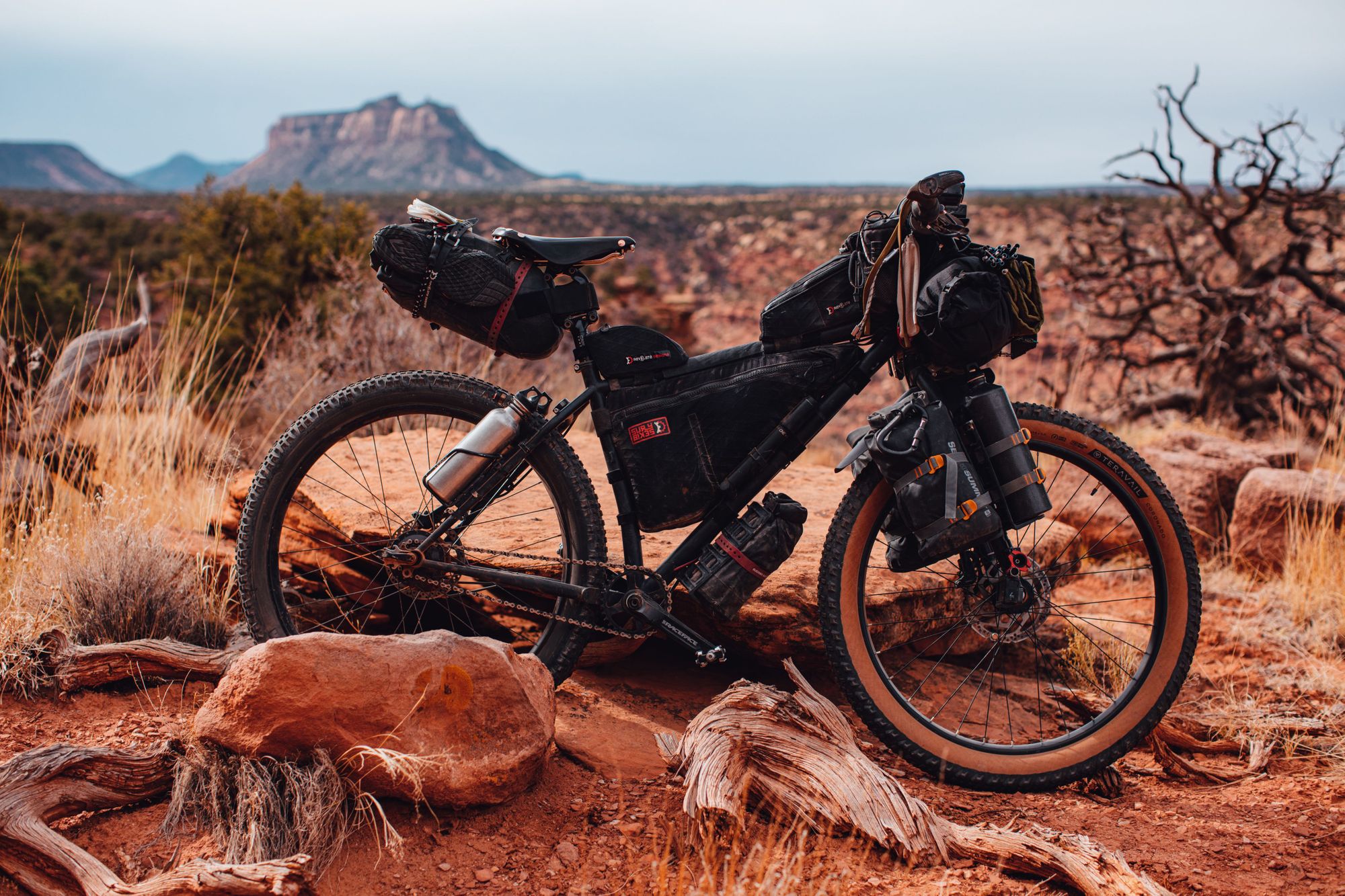
Okay, so this is the exciting part. Bikepacking bags are where you’re going to store everything you need for a successful trip, and they’re what make all those bikepacking pictures look so adventurous - the almighty, lightweight bikepacking bags that hang in the frame, off the handlebars and behind the saddle. They just make it look like you’re off on a great adventure, don’t they? Which is fitting, because if you’ve got them all attached, you probably are.
Saddle bag: Likely one of the biggest bits of storage space you’ll have, this is typically where you'll store your sleeping bag, possibly a mat and some clothes. This bag does what it says on the tin, and goes right behind the saddle, joining to the seat post and saddle itself.

Frame/Top-tube bag: These bags hang from your top tube and are secured by straps which usually connect to the down tube and seat tube as well. You can get full frame packs, which take up the whole space in the middle of your bike nicely, or if you want to keep your water bottle access clear, or just have less stuff to take, you can get half-frame packs as well.
Most packs are made to be compatible with any and all bikes, but of course, certain features such as suspension can get in the way of these bags hanging properly. There are always options around this though. You can get top tube bags that attach to the handlebars instead, which can be great for keeping a GPS device in, for example, or a double top tube pack, where two attached bags attach to the top tube at the centre, and then sit either side of the frame.
The frame bags tend to be great for storing spare parts for the bike, snacks for easy access and random bits and pieces. Tent poles often tend to find their way into the frame bag as well!
Handlebar bag: The bag that hangs between your handlebars on the front will usually offer around the same sort of storage as your saddle bag, and can be a great place to keep clothes, sleeping bags, tents or equipment such as cooking pans. Some bikepackers even just strap their entire tent to their handlebars with a couple of straps, so that’s an option too.
Accessory bag (optional): Worthwhile even if you just fill it with jelly babies, in our view (but also ideal for any quick-access items, like a map, energy gels or crammable waterproofs!). There are also front fork options, as shown in the photograph above, which can be useful for storage and balancing out weight.
Where to buy? Specialists include AlpKit, Apidura and Wildcat Gear, though these days, there are unlimited options for where to pick up your bike baggage.
What are the best bikepacking tents and sleeping bags?
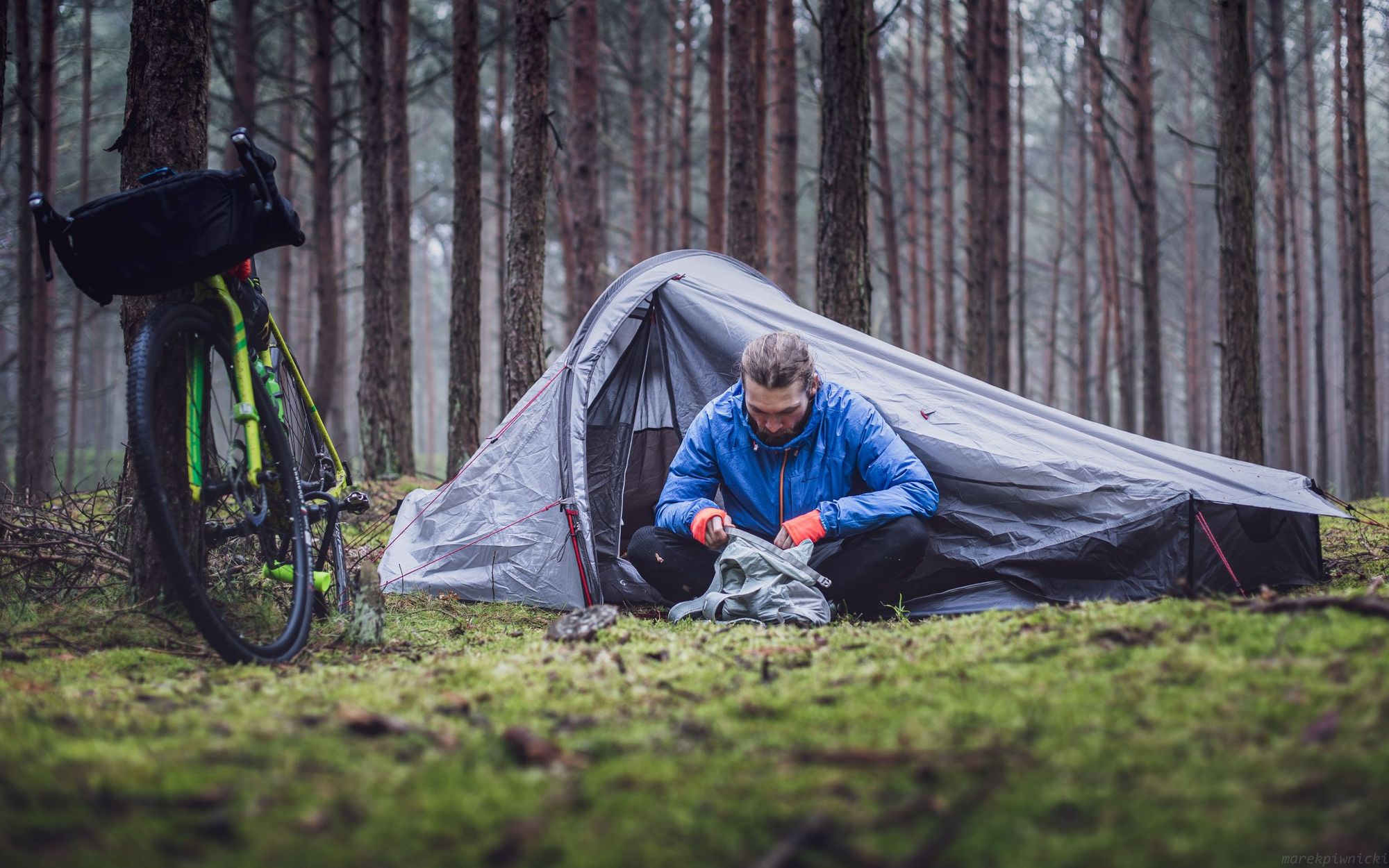
You’re going to notice a trend here, for almost every bit of bikepacking gear. We've stuck sleeping bags and tents in the same section because the basics are the same: the best bikepacking tents and sleeping bags are compact and lightweight.
We’ve just been over the type of storage you’ll have for your adventure, and what you’ll realise when putting it all together is that packing for bikepacking can be a bit like Tetris. Luckily, there’s no shortage of lightweight, compact tents these days, or sleeping bags for that matter. Packaging has come along way!

The more compact and the lighter the better for both of these options. Make sure you’ve still got yourself waterproof and windproof coverage on your tent, though, and make sure that the warmth of your bag is appropriate for your terrain. Of course, if there’s a couple of you going, you can always take a slightly larger tent and split the poles and other parts of the tent between you.
Bivvy bags are also incredibly popular, saving a lot of space versus a tent.
Of course, if you’re going to stay in a bothie, hostel or similar, then you’ll really save a lot of space. Whether this is 'bikepacking' or 'cycle touring' would set some purists rambling, but does it matter if you're having a good time on a bike?
Okay, but what should I eat? What’s the best bikepacking food?
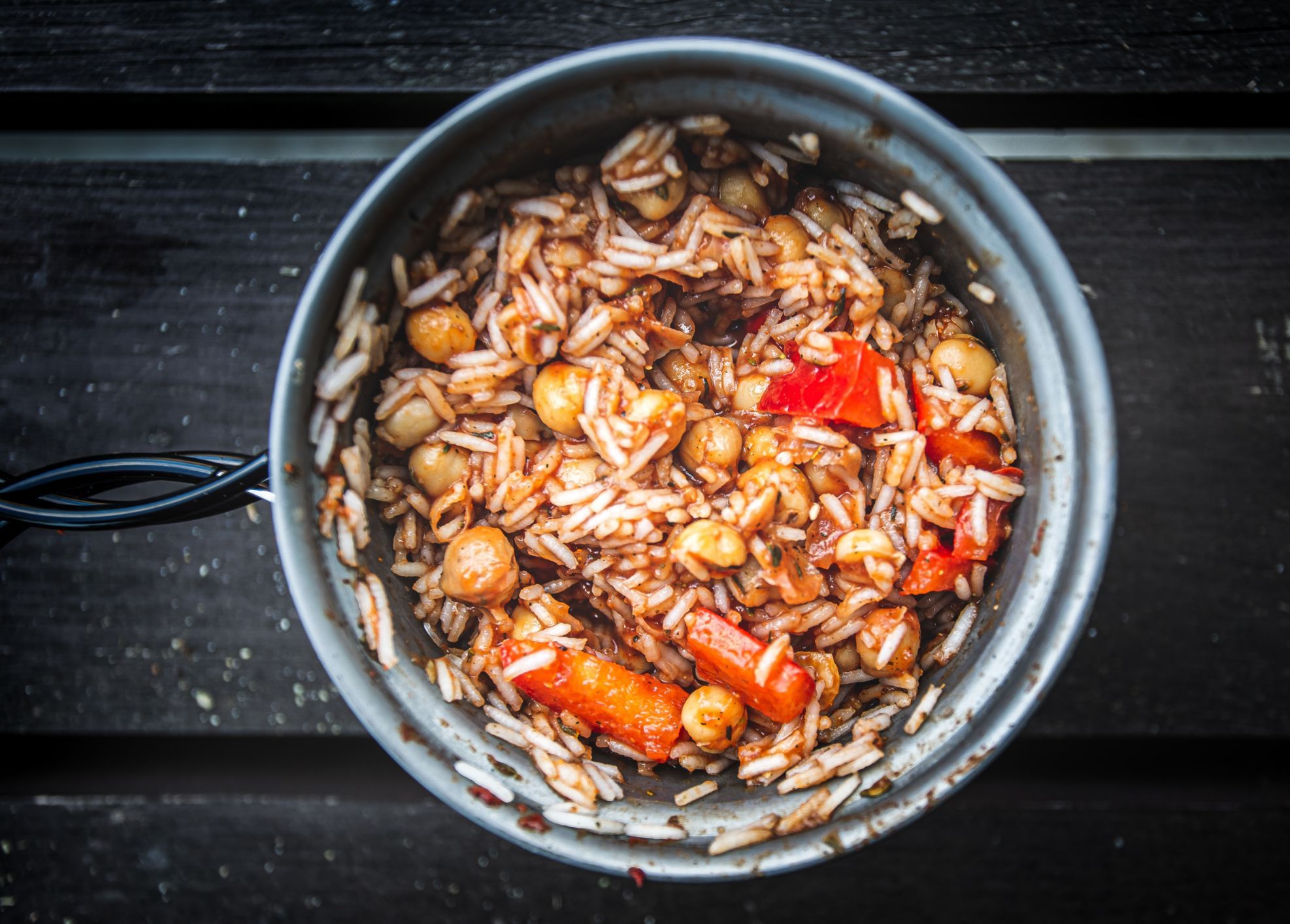
So, you’ve got your pan, which you’re going to also use as your bowl to save space. Good work. We like your style. The best bikepacking food is simple, filling and easy to transport, just like camping food. We’re talking pasta, super noodles, rice or lentils. Mix in some spices, chickpeas or veg and you've got yourself a real tasty meal. There are a variety of camping brands now who produce more elaborate meals in little bags which just need heating up over the stove too.
Anything else I need to know about bikepacking?
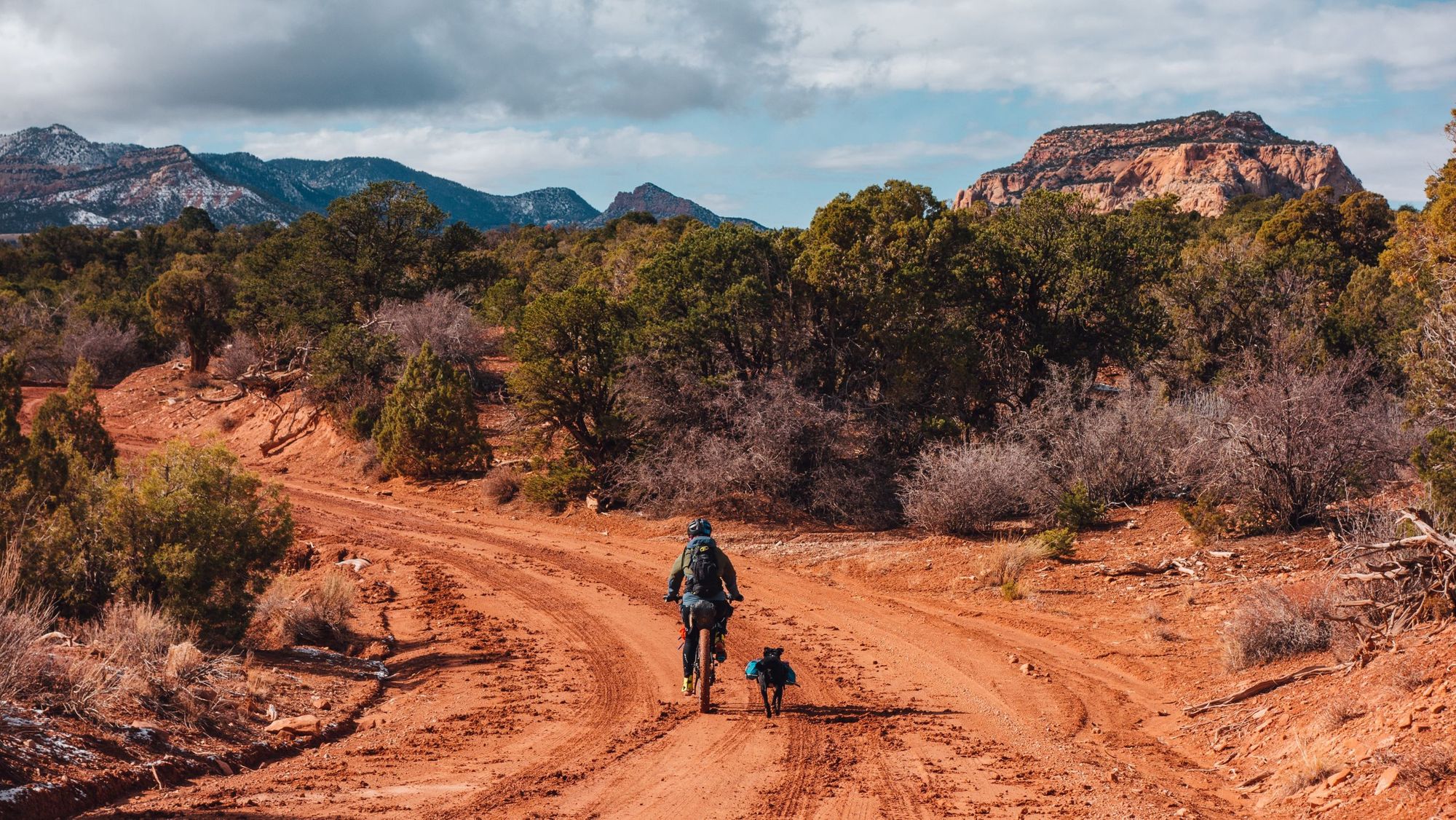
That’s all of our basics for now! Just remember that you need to be comfortable being self-sufficient on a bikepacking trip. You need to know how to read maps or follow your GPS (and ensure it works and stays charged). You need to be comfortable with camping stoves and even have some toilet protocols in place. Sorry for putting that in the same sentence as the camping stove. Finally, be sure to leave no trace and camp responsibly wherever you go.
Useful resources: Bear Bones, AlpKit, Apidura, Wildcat Gear, Bikepacking Scotland, Bikepacking.com, Cycling UK.
Inspired? Join one of our cycling adventures, which include a range of bikepacking trips. Lead image by Patrick Hendry via Unsplash.

